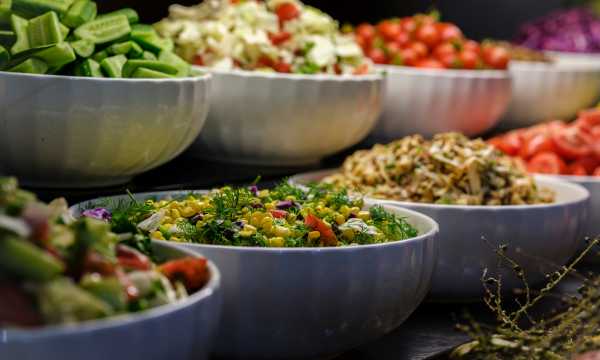When to start introducing baby food?
Along with pregnancy and motherhood comes an endless number of questions and doubts that parents ask themselves, and more so when it comes to a first-time mother. And something that generates a lot of concerns is what should be the right time for the baby’s food introduction. This is a very valid question, as we easily find erroneous information about what is the ideal age to start.
Ad
The baby’s food introduction is an important phase, but it can generate doubts in parents. So, know when to start a baby’s food introduction and find out how to do it in a safe and healthy way. With this information, you will be able to provide adequate nutrition for your baby and ensure its healthy development. Check out the continuation!
Food introduction: Is there an ideal age?
Many experts claim that the baby’s food introduction should occur after the child completes six months of life. This is because precisely at this stage, the baby already begins to show signs of neuropsychomotor development, as well as renal and intestinal maturation to better process food.
In the case of premature babies, the most appropriate thing is to use the corrected age, always observing the signs of readiness for the food introduction to happen effectively. Therefore, milk formula or breastfeeding should be the only foods offered to babies younger than six months.
Why wait to start food intro?
Studies point out that if the baby’s food introduction is done before six months of age, it does not offer any benefit to the child, and may even be harmful. Wanting to offer solid foods before the ideal age can lead to weaning, which can harm the baby, since breast milk should be the main food until it completes its first year. Breast milk is in charge of providing all the nutrients for the little ones to have a healthy development.
As well as the child’s gastrointestinal and immune system is still immature in these first six months, so it can cause food allergies.
And even many people believe that with the ingestion of solids in an early way, the baby will gain more weight. Something that is totally wrong, as breast milk has a higher amount of fat than foods normally offered to babies at this stage.
Now that you already have a little more knowledge about food introduction, see some signs of readiness that will indicate when solid intake should begin.
What are the signs of readiness for food introduction?
As soon as the baby completes the sixth month, he will usually have already acquired some skills necessary for the introduction of food to occur effectively. However, in some cases this can happen up to the eighth month or according to the corrected age in premature infants. And if that happens, there’s nothing to worry about.
See below the main signs of readiness for the beginning of food introduction:
- Loss of tongue propulsion reflex;
- Sit without support;
- Show interest in food;
- Take objects to the mouth;
- Cervical firmness.
The ideal is to wait for the acquisition of these skills, so it will be possible to avoid certain problems such as choking and food rejection. Therefore, always pay attention to the changes that will happen in your child and know when the right time will be.
How to start a food introduction?
Now, has your baby reached six months of age and already have the signs of readiness? Then it was time to start introducing food.
Up to six months, the baby was used to the sweet taste of breast milk, so the best thing to start with is offering fruit, so he will feel more comfortable and accept food better.
Also, some doctors indicate that you can also start with salty foods, but it is no longer recommended that they pass through the blender as was done in the past. This largely makes it difficult for the child to get to know the textures and not be able to identify separately what that “porridge” contains.
How to start a good food introduction?
Currently, after years of research, official health agencies indicate that in the first month of introducing food, they should be kneaded with a fork. In the case of meat or other foods that are more difficult to swallow, they can be shredded or cut into very small pieces.
In order for the diet of the little ones to be rich in macro and micronutrients, it is important that all food groups are included. See what is important for the dish to have:
- Tubers: potato, cassava, yam, etc
- Fresh vegetables: tomato, chayote, carrot, pumpkin, etc
- Legumes: lentils, chickpeas, beans, etc
- Cereals: rice, corn, oats, pasta, quinoa
- Proteins: Meats white and red, eggs
Conclusion
Usually, parents have questions about when is the best time to start introducing foods. Therefore, it is also important to follow the recommendations of the experts so that everything happens effectively and without causing damage to the health of the little one. Therefore, include the little one in the family routine always with great affection so that he can have the best experience possible.
 Diabetes Diets: What to Eat and Avoid
Diabetes Diets: What to Eat and Avoid
Diabetes diets: What to eat and what to avoid. Stay on top of everything in today’s post. […]
More How do I Know if I’m Pregnant? Identifying the Symptoms
How do I Know if I’m Pregnant? Identifying the Symptoms
I know how agonizing it can be to wait for the results of a pregnancy test. I […]
More Exercises for Diabetes: Discover its Benefits and Improve Your Quality of Life
Exercises for Diabetes: Discover its Benefits and Improve Your Quality of Life
Living with diabetes is often a daily challenge, but incorporating regular exercise can be a powerful tool […]
More